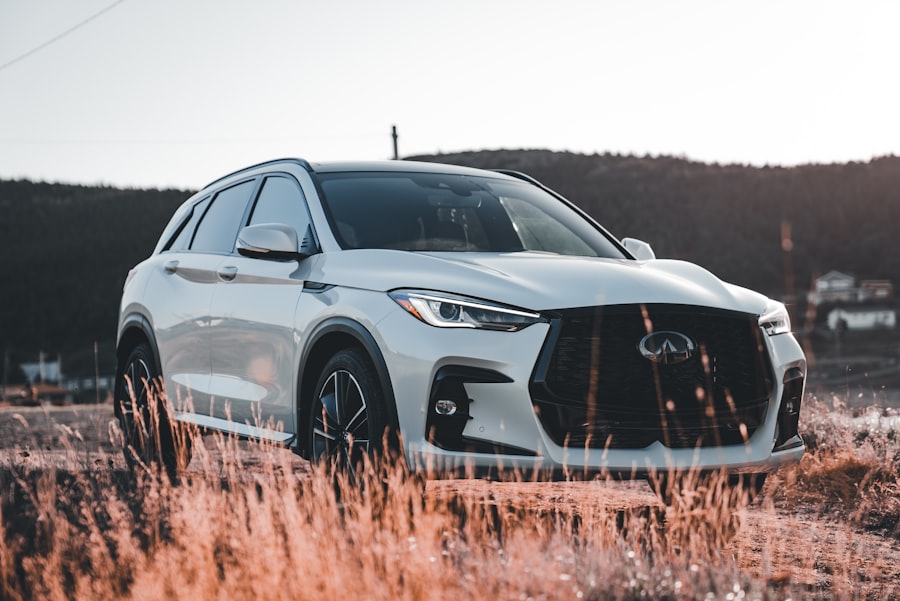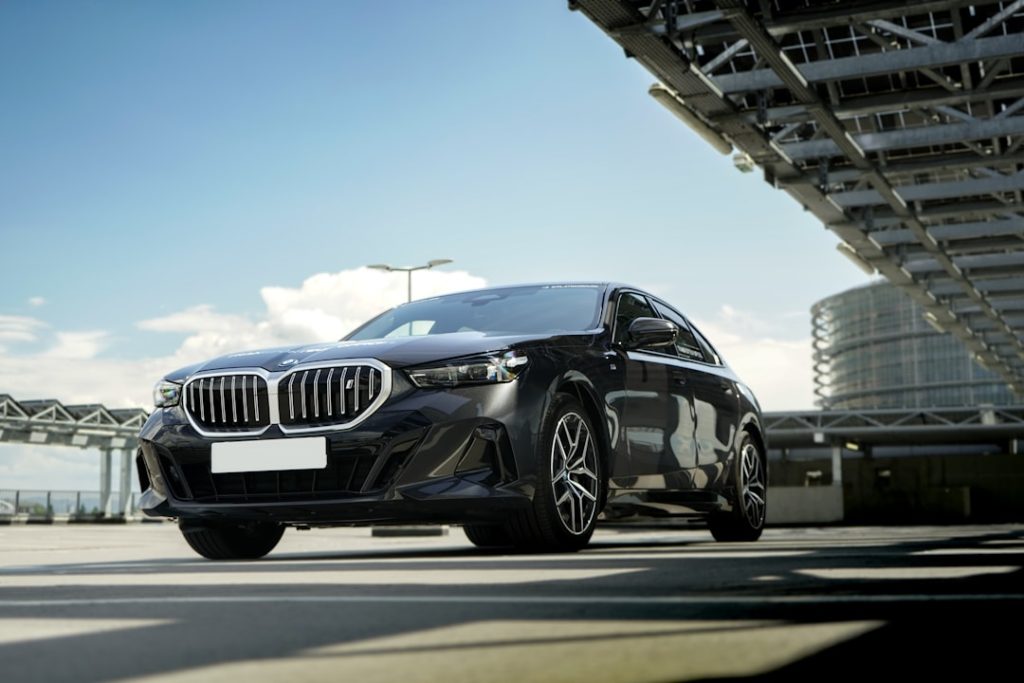In the rapidly evolving landscape of the automotive industry, digital marketing has emerged as a pivotal force for dealerships seeking to enhance their visibility and drive sales. The traditional methods of advertising, such as print media and television commercials, are no longer sufficient to capture the attention of today’s tech-savvy consumers. With the majority of car buyers conducting extensive online research before making a purchase, dealerships must adapt their marketing strategies to meet the demands of this digital age.
Digital marketing not only allows for a broader reach but also enables dealerships to engage with potential customers in a more personalized manner. One of the most significant advantages of digital marketing is its ability to provide measurable results. Through various analytics tools, dealerships can track the effectiveness of their campaigns in real-time, allowing them to make data-driven decisions.
For instance, by analyzing website traffic, social media engagement, and conversion rates, dealerships can identify which strategies are working and which need adjustment. This level of insight empowers dealerships to allocate their marketing budgets more effectively, ensuring that they invest in channels that yield the highest return on investment.
Key Takeaways
- Digital marketing can significantly increase visibility and sales for automotive dealerships.
- Social media platforms can be leveraged to engage with potential customers and drive sales.
- Compelling video content can showcase inventory and attract potential buyers to the dealership.
- Utilizing SEO can drive organic traffic to the dealership’s website and increase online visibility.
- Targeted email marketing campaigns can effectively reach potential customers and drive sales.
Leveraging Social Media for Increased Sales
Social media platforms have become essential tools for automotive dealerships looking to connect with potential buyers. With billions of users worldwide, platforms like Facebook, Instagram, and Twitter offer unparalleled opportunities for engagement and brand building. By creating a strong social media presence, dealerships can showcase their inventory, share customer testimonials, and promote special offers in a visually appealing manner.
Engaging content, such as high-quality images and videos of vehicles, can capture the attention of users scrolling through their feeds, prompting them to learn more about the dealership. Moreover, social media allows for targeted advertising that can reach specific demographics based on interests, location, and behavior. For example, a dealership can create ads that target individuals who have recently searched for vehicles online or those who have shown interest in automotive content.
This level of targeting increases the likelihood of converting leads into sales. Additionally, social media provides a platform for two-way communication, enabling dealerships to respond to inquiries and comments promptly. This interaction fosters a sense of community and trust, which is crucial in the competitive automotive market.
Creating Compelling Video Content for Your Dealership

Video content has become one of the most effective forms of communication in digital marketing, particularly in the automotive sector. Consumers are increasingly drawn to video as it provides a dynamic way to showcase vehicles and convey information. Dealerships can create a variety of video content, including virtual tours of the showroom, detailed vehicle walkarounds, and customer testimonials.
These videos not only highlight the features and benefits of specific models but also help to humanize the dealership by showcasing real customers and their experiences. Furthermore, platforms like YouTube and TikTok have gained immense popularity as channels for video consumption. By leveraging these platforms, dealerships can reach a wider audience and engage potential buyers in innovative ways.
For instance, creating entertaining and informative content that resonates with viewers can lead to increased shares and engagement. Additionally, incorporating live video sessions where sales representatives answer questions in real-time can enhance customer interaction and build rapport with potential buyers.
Utilizing Search Engine Optimization (SEO) to Drive Traffic to Your Website
| Metrics | Data |
|---|---|
| Organic Traffic | 5000 visitors per month |
| Keyword Ranking | Top 3 positions for 10 targeted keywords |
| Click-Through Rate (CTR) | 8% |
| Conversion Rate | 5% |
| Bounce Rate | 40% |
Search Engine Optimization (SEO) is a critical component of digital marketing that focuses on improving a website’s visibility on search engines like Google. For automotive dealerships, effective SEO strategies can significantly increase organic traffic to their websites. By optimizing website content with relevant keywords related to vehicles, services, and local searches, dealerships can improve their chances of appearing on the first page of search results when potential customers are searching for cars or dealerships in their area.
In addition to keyword optimization, local SEO is particularly important for automotive dealerships. Many consumers search for nearby dealerships when considering a vehicle purchase. By ensuring that their business information is accurate and consistent across online directories and platforms like Google My Business, dealerships can enhance their local search rankings.
This includes optimizing for local keywords and encouraging satisfied customers to leave positive reviews online. A strong local SEO strategy not only drives traffic but also establishes credibility within the community.
The Importance of Targeted Email Marketing Campaigns
Email marketing remains one of the most effective ways for automotive dealerships to nurture leads and maintain relationships with existing customers. By segmenting their email lists based on customer preferences and behaviors, dealerships can create targeted campaigns that resonate with specific audiences. For example, sending personalized emails featuring special promotions on vehicles that align with a customer’s previous interests can significantly increase engagement rates.
Moreover, email marketing allows dealerships to keep customers informed about new arrivals, service reminders, and exclusive events. By providing valuable content such as maintenance tips or industry news alongside promotional offers, dealerships can position themselves as trusted resources in the automotive space. The key to successful email marketing lies in crafting compelling subject lines and content that encourages recipients to take action—whether that’s visiting the dealership or scheduling a test drive.
Harnessing the Potential of Influencer Marketing in the Automotive Industry

Influencer marketing has gained traction across various industries, including automotive. Collaborating with influencers who have a strong following in the automotive niche can help dealerships reach new audiences and build credibility. Influencers often have established trust with their followers, making their endorsements particularly impactful.
By partnering with influencers to showcase vehicles or share experiences at the dealership, automotive businesses can tap into their audience’s interest and drive traffic. For instance, an influencer might create content featuring a test drive of a new model or highlight unique features that appeal to their followers. This type of authentic content not only showcases the vehicle but also provides social proof that can influence purchasing decisions.
Additionally, influencers can help amplify promotional campaigns by sharing exclusive offers or events with their audience, further enhancing brand visibility.
Maximizing the Impact of Traditional Advertising Methods
While digital marketing is essential in today’s landscape, traditional advertising methods still hold value for automotive dealerships. Television commercials, radio spots, and print advertisements can effectively reach local audiences and reinforce brand recognition. For instance, a well-placed television ad during prime time can capture the attention of potential buyers who may not be actively searching online but are considering a vehicle purchase.
Moreover, traditional advertising can complement digital efforts by driving traffic to online platforms. For example, including QR codes in print ads that link directly to a dealership’s website or social media pages can bridge the gap between offline and online marketing strategies. Additionally, participating in local events or sponsoring community activities can enhance brand visibility while fostering goodwill within the community.
Measuring and Analyzing the Success of Your Advertising Campaigns
To ensure that marketing efforts yield positive results, it is crucial for automotive dealerships to measure and analyze the success of their advertising campaigns continuously. Utilizing analytics tools allows dealerships to track key performance indicators (KPIs) such as website traffic, conversion rates, and return on ad spend (ROAS). By assessing these metrics regularly, dealerships can identify which campaigns are performing well and which require adjustments.
For example, if a particular social media ad generates high engagement but low conversions, it may indicate that while the content resonates with viewers, there may be barriers preventing them from taking action—such as unclear calls-to-action or an unoptimized landing page. By analyzing these insights, dealerships can refine their strategies to enhance overall effectiveness. Additionally, conducting A/B testing on different ad formats or messaging can provide valuable data on what resonates best with target audiences, allowing for continuous improvement in marketing efforts.
In conclusion, embracing digital marketing strategies is essential for automotive dealerships aiming to thrive in a competitive market. By leveraging social media, creating engaging video content, optimizing for search engines, utilizing targeted email campaigns, harnessing influencer partnerships, maximizing traditional advertising methods, and continuously measuring campaign success, dealerships can position themselves for sustained growth and success in an ever-evolving industry landscape.



